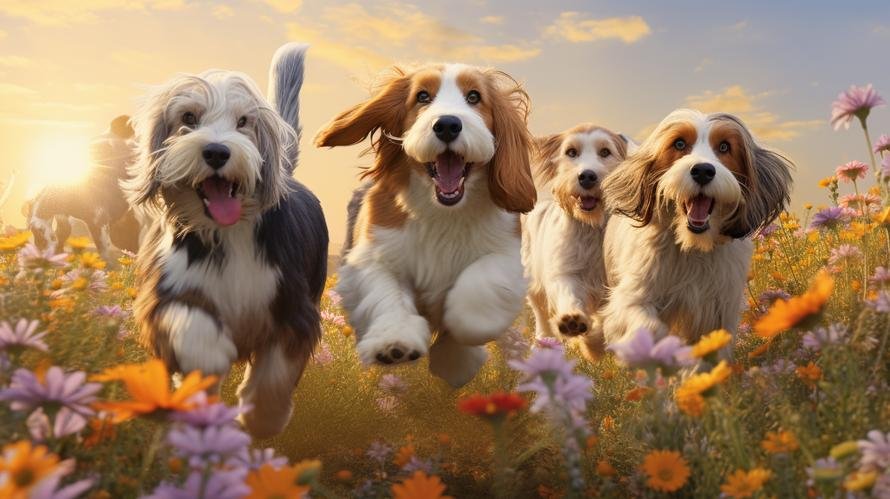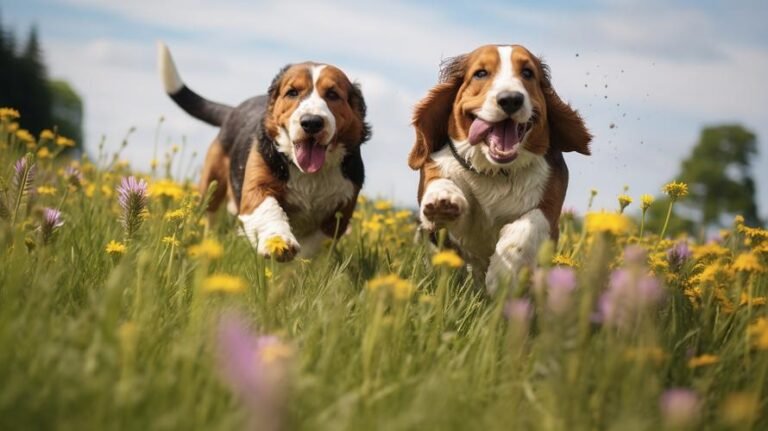In the charming countryside of France, a spirited little hound trots with an air of confidence and a coat that looks like it’s just had a run-in with a haystack. This, my friends, is the Petits Bassets Griffons Vendéen, affectionately known as the PBGV. Now, here’s a tidbit that might surprise you: despite their rustic appearance, PBGVs are bonafide aristocrats of the dog world, sporting a lineage that dates back over 400 years!
But let’s leap from their noble ancestry to a burning question that’s stirring the modern canine community. It’s all about the food bowl and a debate that’s as heated as a French kitchen during dinner rush: To go grain-free or not with your PBGV’s diet?
Grain-free diets for dogs have surged in popularity. They’re often marketed with a promise of being closer to a dog’s natural ancestral diet. Proponents rave about benefits like shinier coats, higher energy levels, and fewer digestive issues. Yet, it’s not all gourmet meals and happy wagging tails on the grain-free front. The debate has its share of controversy, which we’re about to chew over together.
Understand that every dog is a unique individual, including your PBGV. Some may flourish on grain-free diets, while others may fare better with grains in their bowl. It’s a decision that should be tailored to your dog’s specific needs, and not just because it’s the latest trend in the dog park.
To put the grain-free diet under the microscope, let’s delve into the nutritional needs of dogs in general. Canines, though not obligate carnivores like their kitty counterparts, still thrive on a meat-based diet. However, this doesn’t mean they can’t digest grains. In fact, domestication has enabled dogs to handle a certain amount of vegetable and grain content. It’s all about balance.
But what about PBGVs specifically? Well, this breed doesn’t generally have a genetic predisposition to grain allergies. Many PBGVs can digest high-quality grains like brown rice, oatmeal, and barley without any hitches. These grains can provide valuable nutrients, including vitamins, minerals, and fiber. Translated into doggy delights, this means energy to zoom around the yard and a digestive system running as smoothly as a Parisian café.
On the flip side of the coin, some PBGVs might be sensitive to grains. It’s not the norm, but it happens. Signs of grain sensitivity can include itchy skin, ear infections, or gastrointestinal issues. If your PBGV is showing these signs, the grain-free route could be like a ticket to relief. Yet, remember, it’s crucial to play detective and confirm that grains are indeed the culprit before you revamp your furry friend’s diet.
Now let’s address a recent turn in the grain-free tale—the Food and Drug Administration (FDA) raised concerns about a link between grain-free diets and a heart condition called canine dilated cardiomyopathy (DCM). Specifically, certain grain-free formulas relying heavily on legumes and potatoes could be factors in the development of this condition.
Though no direct cause has been established, it’s a reminder that the grain-free diet isn’t a one-size-fits-all solution. It also underscores the importance of choosing a well-rounded diet that ticks all the boxes for your pooch’s nutritional needs—whether you decide on grains or not.
When contemplating the switch to grain-free, consider doing it under the guidance of a veterinary nutritionist or your vet. They can help you tailor the perfect menu that suits your PBGV’s lifestyle, age, and health status. And it’s not just about what to exclude—there’s also a smorgasbord of delightful, dog-friendly foods to include.
If you do opt for grain-free, focus on recipes that have real, identifiable meat or fish as the first ingredient. Your PBGV’s ancestors may not have had a gourmet chef in the woods, but you can bet hunter-instincts had them chomping down on the freshest of fares. Look for fruits and vegetables in the ingredients list too—they’re like the cherry on top, providing antioxidants and essential nutrients for your pooch.
When introducing new food, whether grain-free or grain-inclusive, watch for any drastic changes in your dog’s health or behavior. Transitioning should be gradual—mix the new food with the old, reducing the old and increasing the new over a span of 7-10 days.
And activity matters. PBGVs are energetic hounds—they sniff, they explore, they run. Proper exercise will keep your dog healthy regardless of their diet type, helping them burn off those doggy dinners and maintain a svelte waistline.
Finally, let’s not forget treats—every dog’s guilty pleasure. PBGVs, with their keen sense of smell and zest for adventure, can be trained using tasty morsels. But keep an eye on the ingredients here too. Grain-free or not, treats should be just a sprinkling in the diet, not the main show.
In conclusion, should your Petits Bassets Griffons Vendéen go grain-free? It’s not a definitive yes or no. It’s about discerning what works best for your individual dog. Keep abreast of the latest scientific research, consult your vet, and tune into your PBGV’s health cues. Whether dining on grains or skipping them altogether, the ultimate goal is a happy, healthy hound bounding through the fields (or the living room) with vim and vigor. Bon appétit, dear PBGV!



